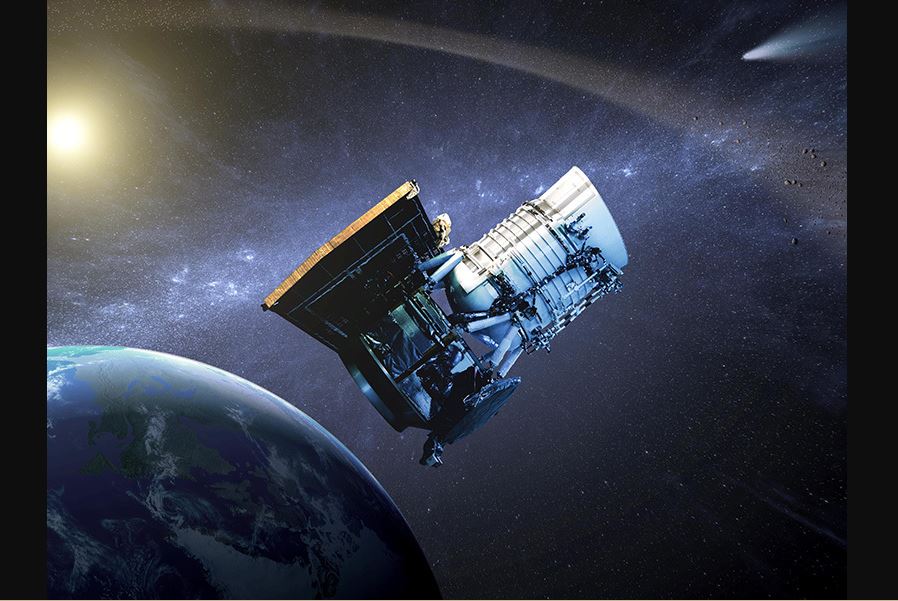First Observation Of A Giant Star Destroying A Planet Made Possible By NEOWISE
First observation of a giant star destroying a planet made possible by NEOWISE as astronomers using the Zwicky Transient Facility (ZTF) at the California Institute of Technology’s (Caltech) and NASA’s Near-Earth Object Wide Field Infrared Survey Explorer (NEOWISE) have observed an aging star destroying a planet within its own star system.
Author:Camilo WoodReviewer:Dexter CookeMay 08, 20232.3K Shares296.7K Views

First observation of a giant star destroying a planet made possible by NEOWISEas astronomers using the Zwicky Transient Facility (ZTF) at the California Institute of Technology’s (Caltech) and NASA’s Near-Earth Object Wide Field Infrared Survey Explorer (NEOWISE) have observed an aging star destroying a planet within its own star system. This is the first time such an event has been directly observed, though astronomers have long theorized that it occurs in red giant star systems.
The research, led by Kishalay De of the Massachusetts Institute of Technology in Cambridge, Massachusetts, provides a glimpse into what may happen to our own solar system when the Sun evolves into a red giant star in approximately five billion years. At that time, the Sun may absorb Mercury, Venus, and possibly Earth.
As a star reaches the later years of its life, it will eventually run out of fuel within its core, causing it to increase in size and turn reddish in color. This type of star is known as a "red giant." If a red giant has planets orbiting near it, those planets will typically be swallowed by the star as it expands in size, destroying them. Although this event has been predicted for decades, it has never been directly observed until now.
A group of astronomers led by Kishalay De of the Massachusetts Institute of Technology have directly observed a red giant star destroying a planet within its own star system. Using the Zwicky Transient Facility (ZTF), NASA’s Near-Earth Object Wide Field Infrared Survey Explorer (NEOWISE), and other ground-based observatories, De et al. were able to study an event named ZTF SLRN-2020, and even determine the characteristics of the planet that was destroyed by its host star.
The planet in ZTF SLRN-2020 was similar in size to Jupiter, but orbited much closer to its host star than Jupiter does to our Sun, being closer than Mercury. Observations by NEOWISE and ground-based observatories allowed the astronomers to predict the sequence of events that occurred during the planet's destruction.
As the star expanded into the planet's orbital plane, its atmosphere surrounded the planet, causing drag and slowing its orbit, which led to the planet sinking deeper into the star, causing a temporary increase in the star's size and brightness by several hundred times its usual magnitude.

Planetary Death Spiral
Interestingly, De wasn't initially searching for planets being destroyed by their host stars. Instead, using the ZTF, he was searching for novae, a phenomenon in which a white dwarf cannibalizes hot gas from nearby stars. While observing a bright flash of light from a star, De initially believed it to be another novae, but it turned out to be the event of a planet being absorbed and destroyed by its host star.
The flash of light noticed by De in his search for novae turned out to be something quite different. While novae are characterized by hot gas flows, follow-up observations of the star showed that the surrounding gas and dust were much cooler than expected.
This led De to investigate further, and with NEOWISE data, he discovered that the star had brightened in infrared light almost a year before the flash observed by ZTF. De concluded that the dust around the star after the flash was likely caused by a planet that fought until the very end, pulling hot gas away from the star as it entered the star's atmosphere.
This gas cooled and turned to dust, which was then ejected as the planet was pulled apart by the star, producing even more dust. The NEOWISE data was critical in understanding the event and helped to confirm that it was indeed a planet being destroyed by its host star.
As previously discussed, the recent discovery by De et al. sheds light on how our solar system may look like in five billion years when the Sun engulfs Mercury, Venus, and potentially Earth. However, the event will not be as significant as ZTF SLRN-2020 since Mercury and Venus are smaller than Jupiter.
De explains that if one were to observe the solar system five billion years from now, they might notice a slight increase in the brightness of the Sun, but not as dramatic as ZTF SLRN-2020. Nevertheless, the research will serve as a model for future studies that aim to investigate the absorption and destruction of planets by red giants, which is believed to occur a few times each year within our galaxy.
Conclusion
“This discovery highlights the importance of observing and archiving the entire sky since we do not know all of the interesting phenomena we might be capturing. With the NEOWISE archive, we can examine the past and find hidden treasures or gain insight into an object that other observatories cannot provide,” said NEOWISE deputy principal investigator Joe Masiero from the Infrared Processing and Analysis Center at Caltech.
Jump to

Camilo Wood
Author
Camilo Wood has over two decades of experience as a writer and journalist, specializing in finance and economics. With a degree in Economics and a background in financial research and analysis, Camilo brings a wealth of knowledge and expertise to his writing.
Throughout his career, Camilo has contributed to numerous publications, covering a wide range of topics such as global economic trends, investment strategies, and market analysis. His articles are recognized for their insightful analysis and clear explanations, making complex financial concepts accessible to readers.
Camilo's experience includes working in roles related to financial reporting, analysis, and commentary, allowing him to provide readers with accurate and trustworthy information. His dedication to journalistic integrity and commitment to delivering high-quality content make him a trusted voice in the fields of finance and journalism.

Dexter Cooke
Reviewer
Dexter Cooke is an economist, marketing strategist, and orthopedic surgeon with over 20 years of experience crafting compelling narratives that resonate worldwide.
He holds a Journalism degree from Columbia University, an Economics background from Yale University, and a medical degree with a postdoctoral fellowship in orthopedic medicine from the Medical University of South Carolina.
Dexter’s insights into media, economics, and marketing shine through his prolific contributions to respected publications and advisory roles for influential organizations.
As an orthopedic surgeon specializing in minimally invasive knee replacement surgery and laparoscopic procedures, Dexter prioritizes patient care above all.
Outside his professional pursuits, Dexter enjoys collecting vintage watches, studying ancient civilizations, learning about astronomy, and participating in charity runs.
Latest Articles
Popular Articles